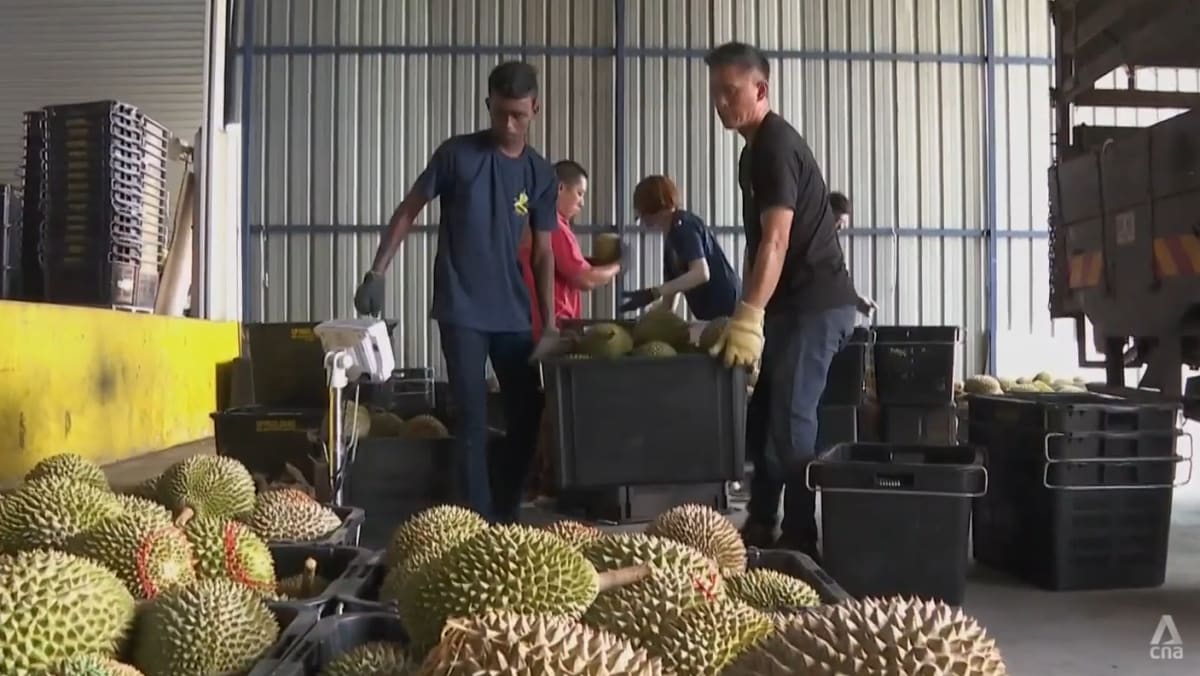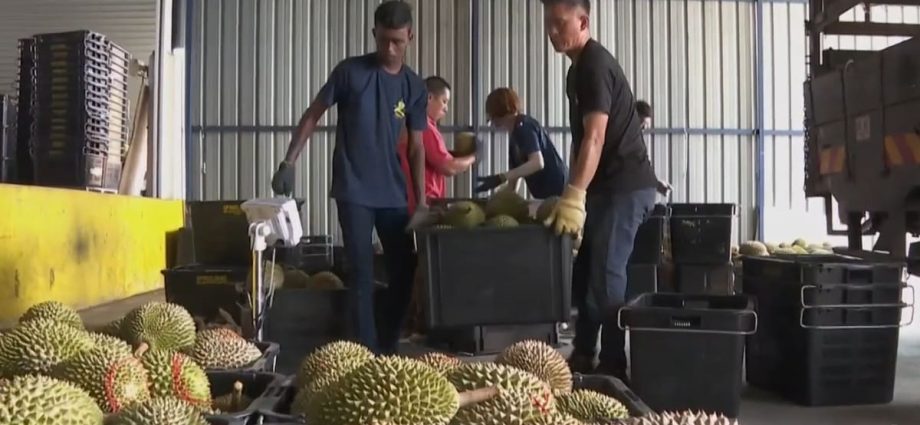
“This is another new opportunity, because in terms of fruit wise, consumers (prefer) freshness. So fresh durian is a very new thing for consumers, and definitely, we have a lot of big demand from the China market,” said Mr Tan Sue Yee, CEO of Malaysian durian supplier Top Fruits.
“The biggest challenge is fresh durians have a shorter shelf life, so we need to do it in a very fast way, and we are only able to do it by air shipment,” he added.
For more than a decade, the company has been shipping frozen durians to China, which has become its biggest overseas market and accounts for about 60 per cent of its total exports.
Mr Tan said the chance to export fresh durians has opened doors to introduce more varieties to the Chinese market.
It could also inspire more local entrepreneurs to invest in agribusiness, as well as encourage farmers to adopt better farming practices and improve the quality of their products, he added.
He said that while the most popular varieties are Musang King and Black Thorn, the company will “slowly focus more” on premium ones like D198, Golden Phoenix and IOI.
“(In) Malaysia, we have about 200 types of variety for the Chinese consumers, but we have to find the right variety and the right quantity for us to export,” he said.
While neighbouring countries such as Thailand and Vietnam have had a head start in exporting fresh durian, Malaysian farmers told CNA they are confident in the unique quality of their thorny fruit.
Durian Academy founder Lim Chin Khee said: “We are going for the premium market. That’s why I think it’s good that … we (sell) much more expensive (durians).
“Malaysia focusing on the premium market is the right path.”

